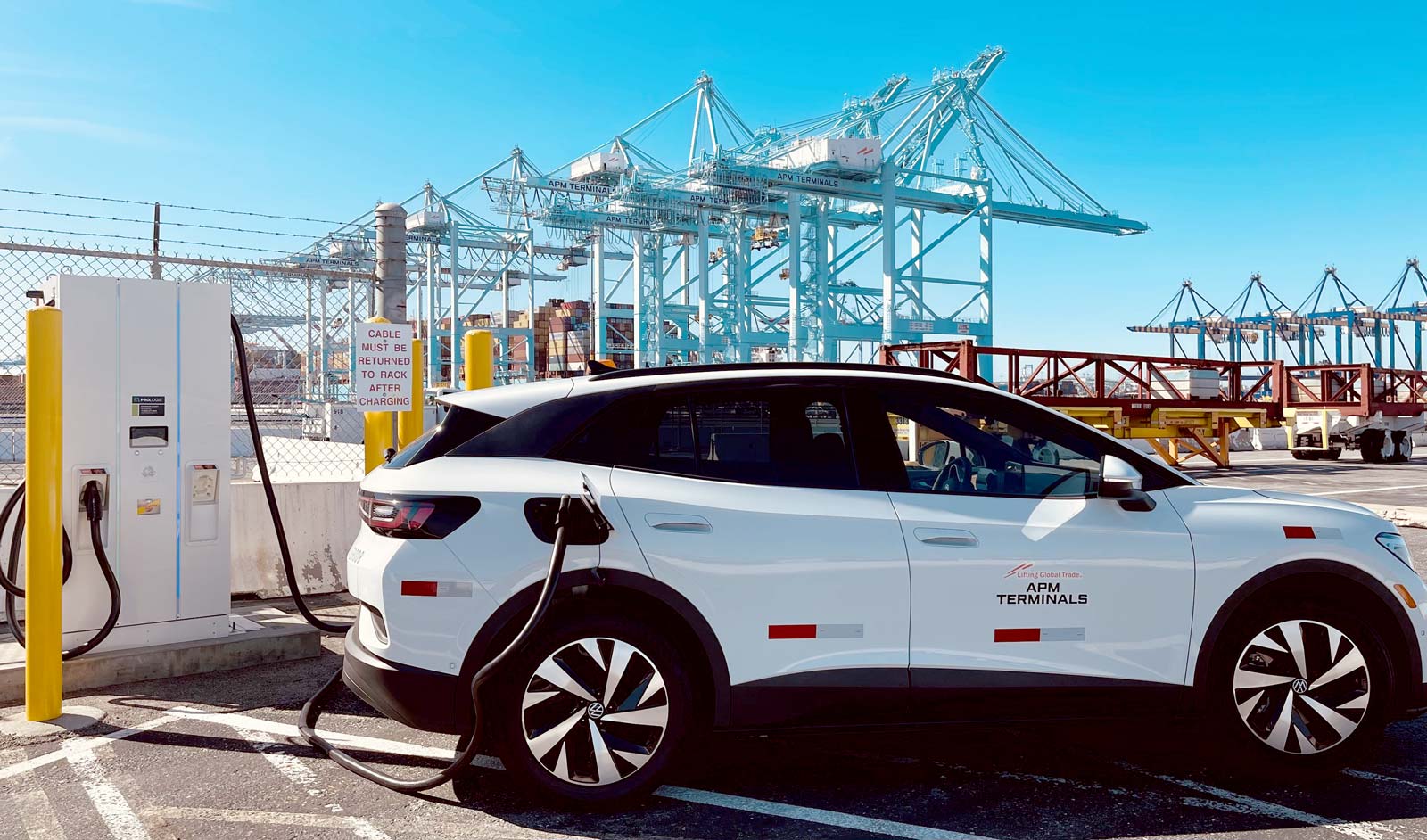
27/02/24
Pier 400 Los Angeles Accelerates Sustainability with Terminal Fleet Electrification
APM Terminals today unveiled a significant upgrade of its terminal operations fleet to electric vehicles (EVs). The terminal has invested nearly USD 1 million to replace 28 internal combustion engine vehicles with new, all electric Volkswagen ID.4s. Electrification of its passenger vehicle fleet is another step in aligning Pier 400’s operations with APM Terminals’ sustainability commitments and in keeping with the goals laid out in the San Pedro Bay Ports Clean Air Action Plan (CAAP) 2017 Update for California ports to transition to zero-emissions technologies by 2030.
“Pier 400 is taking proactive steps to decarbonize operations today with proven and available EV technology,” said Jon Poelma, Managing Director of APM Terminals Pier 400. “By taking the dream of electric fleets off the drawing board and putting them into the terminal, we’re able to reduce our environmental impact by up to 60 tons of annual tailpipe CO2 emissions. These are small but important steps to do our part, along with the contributions of our employees, partners, customers, and community, to make the green transition a reality.”
The Port of Los Angeles has long been committed to protecting air quality in and around the harbor. Several clean air action plans and emission reducing programs have been put into place to cut air pollution and reduce health risks for the communities surrounding the global seaport complex.
Zero-emission port
“I applaud APM Terminals for an initiative that takes us another step toward a zero-emission future in our port complex,” said Port of Los Angeles Executive Director Gene Seroka. “Decarbonizing our industry is more urgent than ever. It’s this kind of proactive mindset that will help us get there.”
To support the new EV fleet, Pier 400 has installed a Level-3 dual-port DC fast charge station, four Level-2 dual port charging stations, and will be adding four additional Level-2 dual-port charging stations accessible to staff, visitors, and the public. This program signifies the first phase for Pier 400’s electrification of its wider fleet of approximately 100 vehicles for terminal operations.
Pier 400’s transition to EVs delivers multifaceted benefits for all stakeholders:
- Reduction of nearly 60 tons of annual tailpipe CO2 emissions for the replaced vehicles*
- Deploying electric vehicles at the terminal completely eliminates emissions of harmful pollutants like nitrogen oxides (NOX), sulfur oxides (SOX), and particulate matter (PM) at the source, creating a cleaner and healthier environment that benefits both employees and visitors.
- New EVs are governor-limited to 25 mph, maximizing safety in the operational environment
Lifting the Standard of Responsibility Globally
Pier 400 is among five terminals participating in APM Terminal’s global electrification pilot to speed up port-equipment decarbonisation. The five terminals were chosen for their decarb-ready maturity levels, supportive local authorities, government, and legislation. To decarbonise its operations, APM Terminals will focus on reducing energy usage, replacing fossil-fuel driven equipment with battery electric, and decarbonising its grid electricity by using renewable energy. As part of the A.P. Moller – Maersk, APM Terminals has made an industry-leading commitment to be fully net zero by 2040. To learn more, visit APM Terminals’ “Decarbonization” page.
*CO2 tailpipe emissions estimates based upon calculations provided on fueleconomy.gov for replaced vehicle make, model and mileage.